Astrophotographer Julia Icenogle on Why She Made the Move
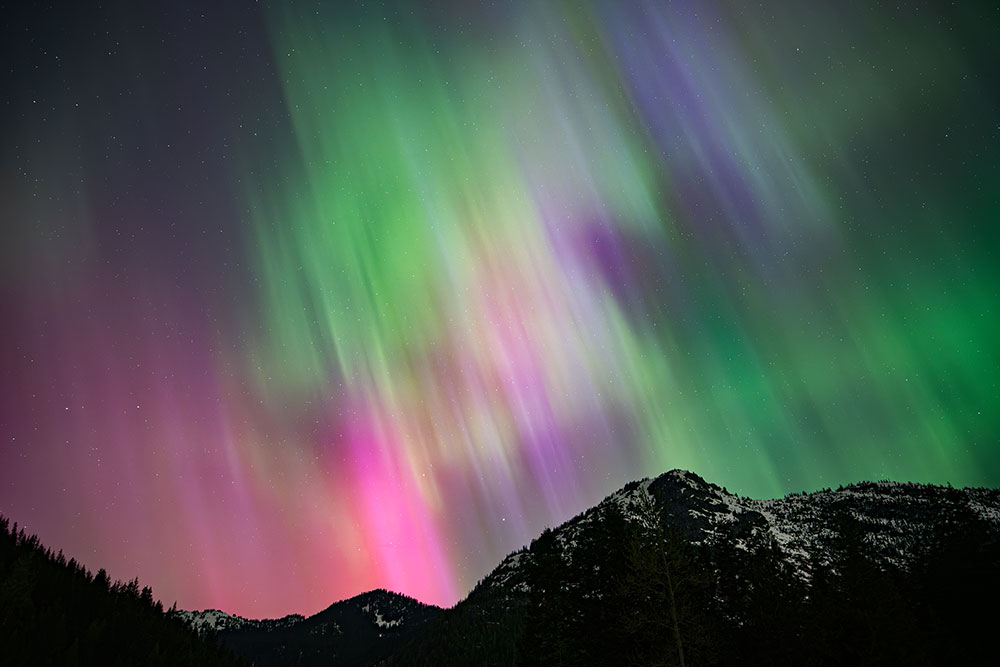
Julia Icenogle is an astrophotographer and illustrator based in Seattle, Washington. She started her photographic career with a DSLR, then was using an APS-C size (crop sensor) mirrorless camera before making the switch from another brand to Nikon full-frame cameras with the Z f and Z 7II. After a busy season which took in the spring total solar eclipse, a major solar storm and plenty of expeditions to capture the Milky Way, Julia sat down with us to talk about her approach to astrophotography and what she needs from her camera gear.
Julia explains what first drew her to the art of astrophotography, and why she keeps at it, despite the unique challenges.
I’ve been interested in astronomy and photography since I was a kid, but it took a couple of decades before I realized I could combine the two. My first night photo was taken on a Nikon D5000, and it is an objectively terrible image, but seeing the stars appear on the LCD screen for the first time felt like a kind of magic. That was it—there was no turning back, and that’s what keeps me going.
You have to be pretty enthusiastic about astrophotography to do it, because it can be very challenging. Clouds may drift in at the exact moment the Milky Way is in the perfect alignment. Your focus could be off. An airplane might somehow manage to find its way into every shot, and fatigue from hours of being up all night can lead to dumb user errors. But occasionally you’ll get something amazing.
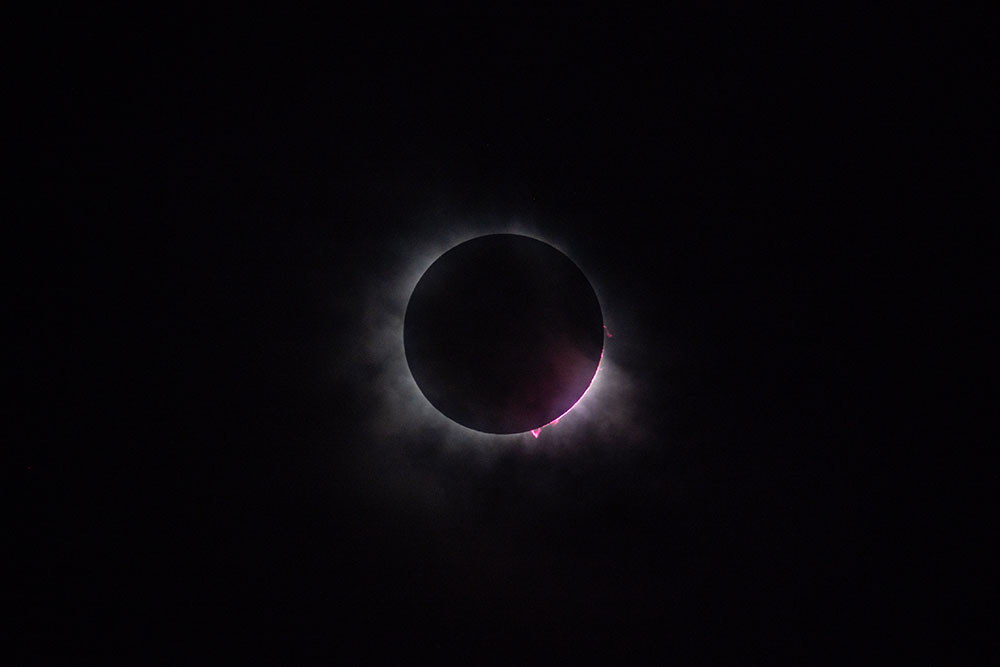
The solar eclipse earlier this year is a good example. Despite years of historical weather data suggesting that Real County, Texas would have a good probability of clear skies, things were not looking great in the days leading up to the eclipse. With the forecast worsening, I considered packing up camp and driving all night to Arkansas, the next nearest spot with a better outlook. In the end I decided to stay put and take my chances. On the morning of the eclipse, a thick cloud cover rolled in as predicted. Following local folklore, we whistled for more wind to clear the sky, which must have worked, because about halfway through totality the eclipsed sun emerged in all its glory!
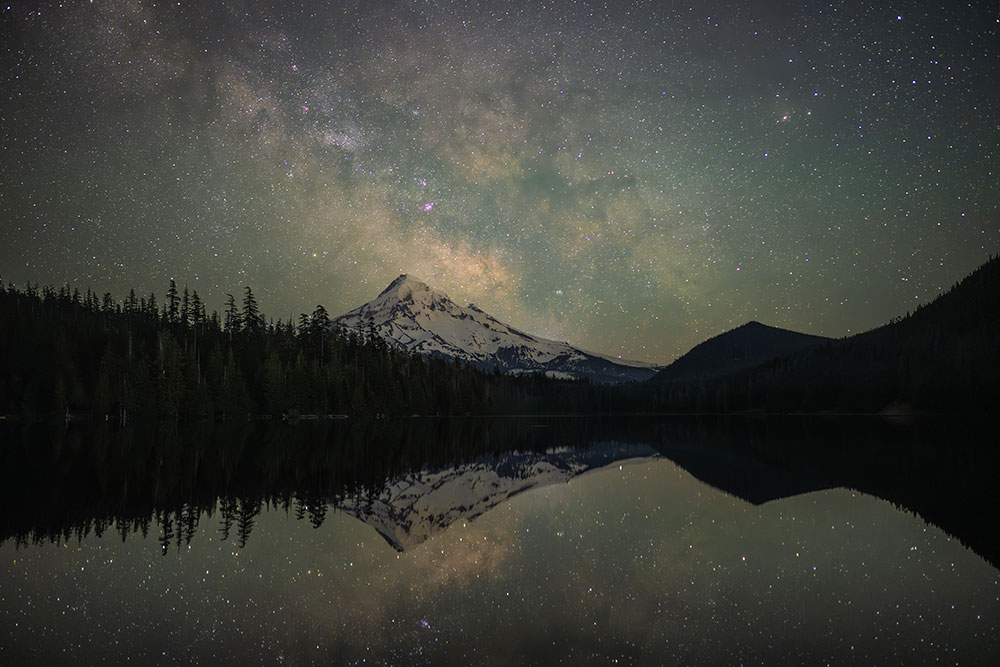
Z f for Astrophotography
In addition to the image quality benefits of the Z f’s full-frame sensor compared to my previous APS-C format cameras, the manual dials are very handy for night photography. When you’re looking down at a screen to change exposure settings, you can easily blow out your night vision, so being able to change settings by touch is fantastic. My previous cameras had a similar control layout, so when the Z f was announced, it was a lot easier to contemplate making the switch back to Nikon, and also upgrade to full-frame.
The manual dials are also useful during time-sensitive events like a solar eclipse. You’re watching the most amazing phenomenon and you’ve only got a minute, and you know that if you mess up, it’ll be years until you get another chance. In a situation like that I don’t want to be distracted staring at settings on a little screen for even a second. During the eclipse I wanted to get a variety of exposure times in order to capture prominences and the inner, middle, and outer corona. I was able to do that quickly by touch, just by turning the shutter speed dial a notch or two in either direction.
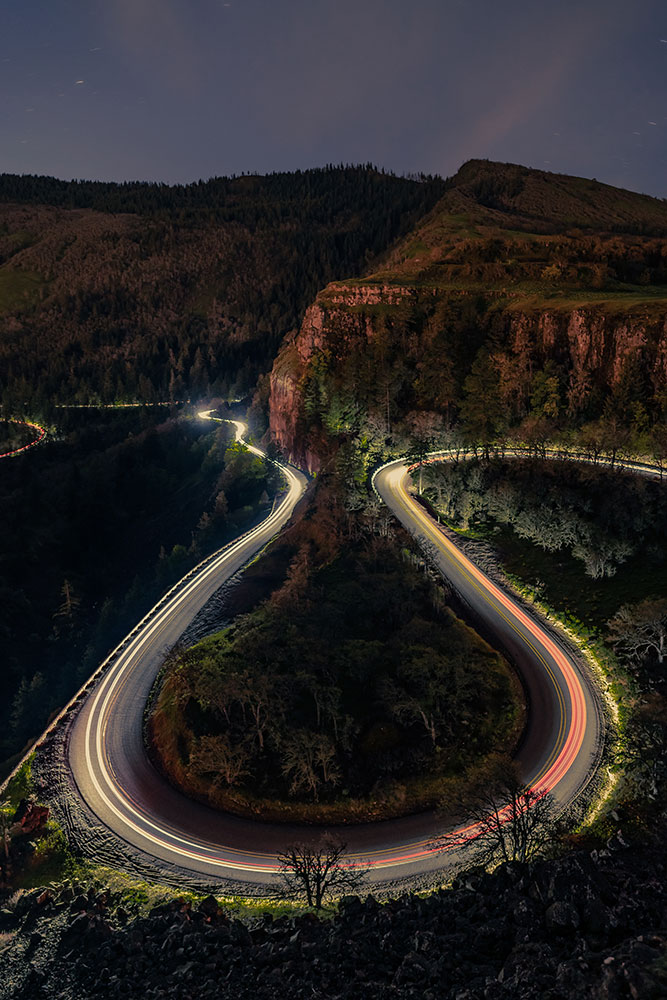
With so many possible variables that can affect a shoot, Julia spends a lot of time planning her expeditions. How does she approach a typical shoot?
I spend an embarrassingly long time searching satellite views on Google Maps for possible dark sky locations with no light pollution. The topographical maps on the Gaia GPS app help to determine if a mountain or landmark will be blocking the view. I’ll also check to make sure that the area I’m considering will be accessible at night and isn’t on private land. I scout locations during the day if I can, but sometimes I don’t have any option except to show up and hope for the best.
I use the PhotoPills app to check Milky Way core alignment, another app called Astrospheric to check the sky conditions, and yet another called Windy to double check the weather forecast. I also stay alert for notifications about potential Aurora activity and if I get pinged that it’s looking good, I’ll drop everything and go do that instead.

The camera settings required for successful night photography are completely different to other kinds of subjects. With shutter speeds often running into several seconds, high ISO sensitivities and very little light, getting clean, sharp images takes practice. How does Julia approach the challenge?
For the purposes of focus and composition I set my lens aperture wide open, and I usually focus manually on Jupiter or some other bright star or planet about a third of the way into the frame. If there’s still some ambient light, I might turn focus peaking on, which helps. Starlight View mode in the Z f is great for twilight and moonlight, and it’s very useful if I arrive at my location after sunset, when I’m composing shots in near-darkness. I shoot in manual exposure mode with the lens aperture either still wide open or slightly stopped down, and usually start with an ISO setting of between 2000-3200. When it comes to the shutter speed, I let PhotoPills do the math to determine how long of an exposure I can get away with for my camera and specific lens before stars turn from dots to lines. I don’t like looking at the LCD screen if I can help it because it can cast too much light, so I usually turn the LCD off and use the viewfinder, unless the camera is positioned at an awkward angle.
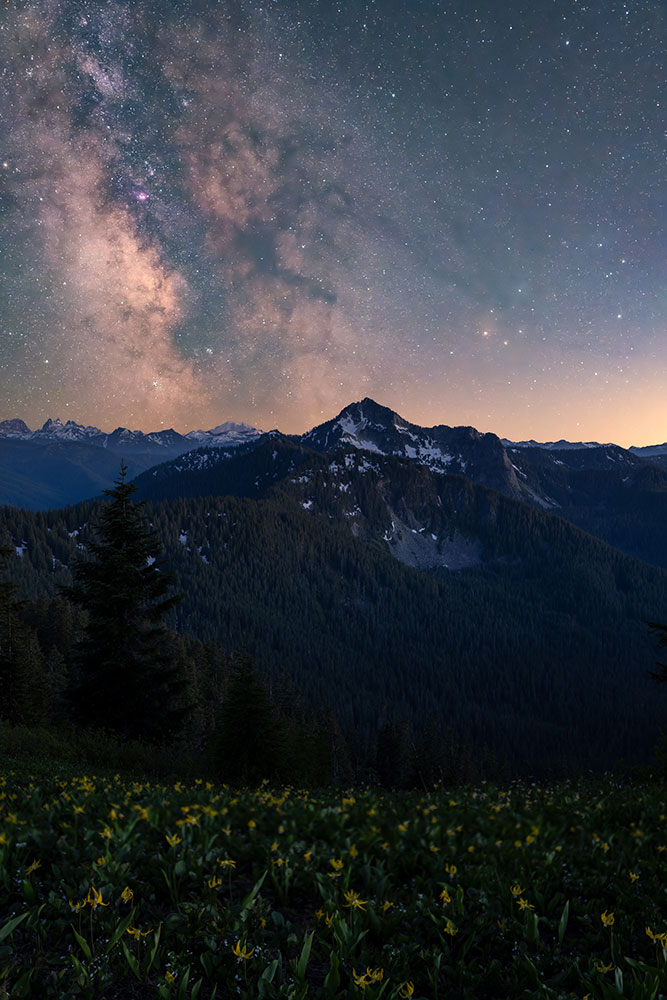
Back when I was still considering making the switch to full-frame, I borrowed a friend’s Z 7 and did some side-by-side comparisons against my APS-C gear, and it was so much better. When I was shooting on APS-C, I learned a lot of strategies to reduce noise using third-party apps and image stacking and so on, but with the Z f, I’m finding that I don’t need to do any of that. I’ve just been capturing single exposures and adjusting in Adobe Photoshop Lightroom. I recently added a Z 7II to my collection as well, which has also been great for low-light photography. For lenses, I’m still building out my Nikon mirrorless kit, but I’ve been extremely impressed by the results I’m getting from the NIKKOR Z 14-28mm f/2.8 S and the NIKKOR Z 35mm f/1.8 S lenses. My dream lens would be a super-telephoto pancake for moon shots which I could take backpacking, but I know that’s impossible!
Julia Icenogle
Julia Icenogle is a self-taught photographer based in Seattle, WA, who finds inspiration in the magic of the night sky. By day, she works as a hand therapist, aiding patients in recovering hand function after injury. At night, she ventures into the dark, capturing the awe-inspiring beauty of the cosmos as seen from the Pacific Northwest. She is nearly always accompanied by her loyal Belgian Malinois, Lyra.
Check out more of Julia’s photography on Instagram.
